NEW HOPE, PA – Two mid-June open house sessions have been scheduled on proposed construction plans, travel restrictions, and other aspects of a 2024 rehabilitation of the nearly 120-year-old New Hope-Lambertville Toll-Supported Bridge, the Delaware River Joint Toll Bridge Commission announced today.
The locations and times for the open houses are:
|
New Hope-Lambertville (Route 202) Toll Bridge |
Riverside Ballroom |
The open houses will consist of viewing stations where the public may speak with members of the project design/engineering team, ask questions, and provide comment on the project. The sessions will feature visual displays of general existing conditions, planned major project tasks, an updated project schedule, anticipated travel restrictions and impacts, the sequencing of work stages, and information about a programmable LED lighting system that would highlight the bridge’s architectural profile along the river.
Following the open houses, the displayed materials will be added to a project-specific webpage — http://www.drjtbc.org/project/newhopelambertville — the Commission established earlier this year. Individuals unable to attend the open house sessions could then view the materials and relay concerns or questions during a two-week-long public comment period scheduled to end 4 p.m. June 30. Once the open house/public comment process is completed, project planning will proceed to final design.
Besides the installation of an architectural lighting system, the bridge’s rehabilitation is expected to include the following major tasks:
- Removal of the current walkway panels and replacement with skid-resistant foam-core fiber-reinforced-polymer panels;
- Cleaning and repainting of the bridge’s steel-truss superstructure; and
- Repair or replacement of various deteriorated or compromised steel components.
The Commission already has explained that the bridge’s walkway will need to be closed for a yet-to-be-determined period as part of the rehabilitation. Motorist impacts also are in the process of being determined. The extent of pedestrian and motorist impacts will be ascertained and included among the materials presented at the June open houses.
The Commission cannot rule out that short-duration closures of the bridge’s two travel lanes might be necessary at some points during the rehabilitation. Ideally, the project can be staged in a manner that would impact westbound (Pennsylvania-bound) vehicular travel across the bridge only as a last resort. (Tolls are collected in the Pennsylvania-bound direction at the next closest river crossing – the New Hope-Lambertville [Route 202] Toll Bridge – roughly one mile upstream. Class 1 passenger vehicle tolls at that bridge will be $1.50 for E-ZPass and $3 for cash transactions at that bridge in 2024. Toll rates are higher for larger vehicles.) Eastbound (New Jersey-bound) motorists affected by rehabilitation project travel restrictions would have toll-free access in that direction across the nearby toll bridge.
The aging steel-truss bridge connecting New Hope and Lambertville’s commercial centers was last rehabilitated in 2004.
In February, the Commission announced the procurement of an engineering consulting firm – GPI/Greenman Pederson, Inc. of Lebanon, N.J. – to design a planned rehabilitation of the bridge in 2024.
GPI has performed a detailed inspection of the structure to identify and confirm the various structural deficiencies to be addressed under the rehabilitation project. GPI is currently in the process of mapping out a preferred course of action to address identified issues with the bridge and plan out the other major tasks that the Commission has budgeted to be conducted during the project. This preferred rehabilitation scenario is what will be presented to the public at the upcoming open houses.
The functionally obsolete bridge superstructure has a four-ton weight limit, a 10-foot height restriction, and a 15-MPH speed limit. It carried an average of 12,400 vehicles per day in 2022.
The bridge was constructed for the former New Hope Delaware Bridge Company in 1904, replacing a wooden covered bridge that was destroyed in the “Pumpkin Flood” of October 1903. The steel truss replacement bridge initially operated as a private tolled crossing 15-1/2 years. The bridge has been publicly owned and operated as a non-tolled crossing since early 1920. The Commission has owned the bridge since July 1, 1987. The Commission uses a share of toll proceeds collected at its eight toll bridges to operate and maintain the bridge and 11 other “toll-supported” bridges along the river.
